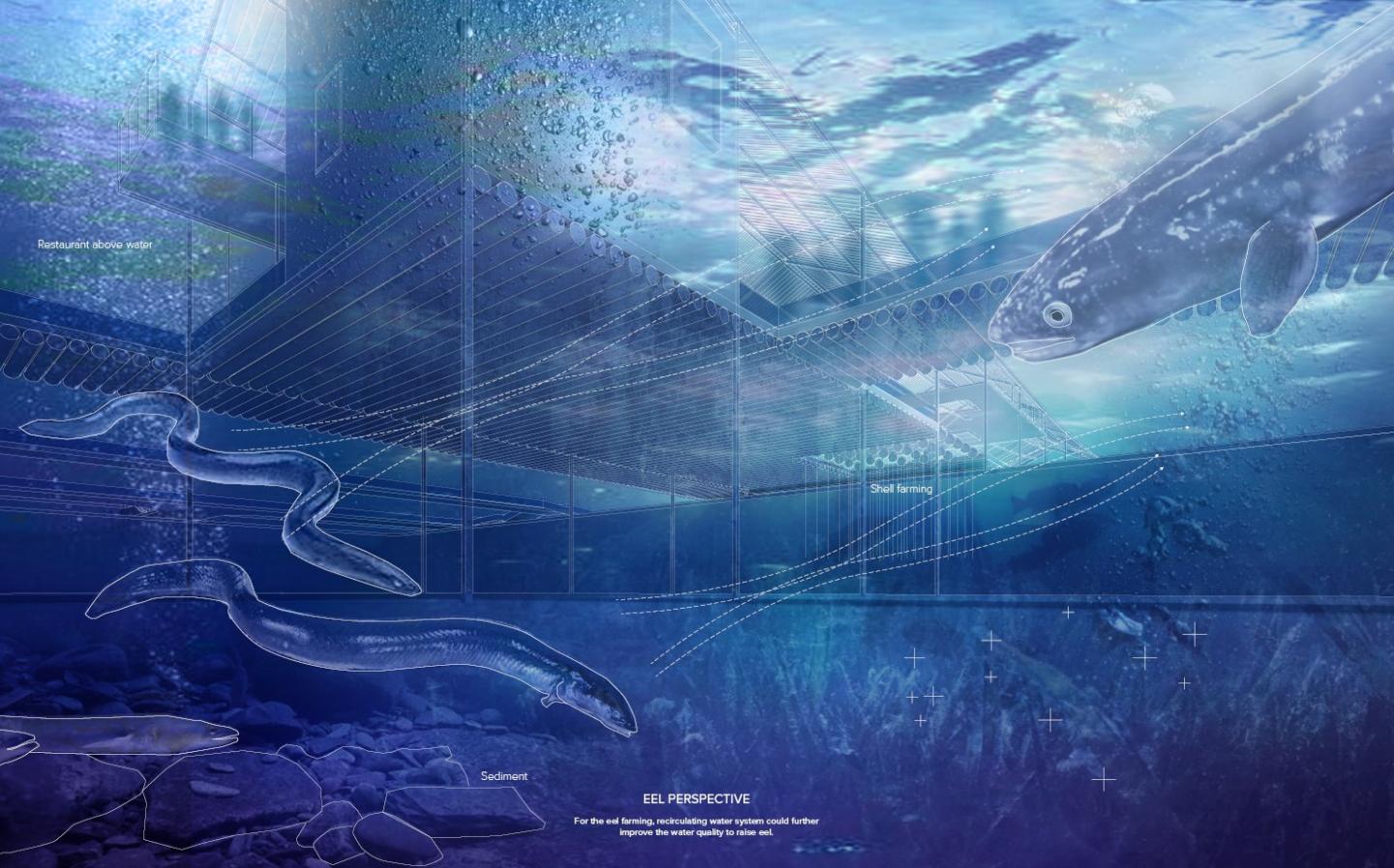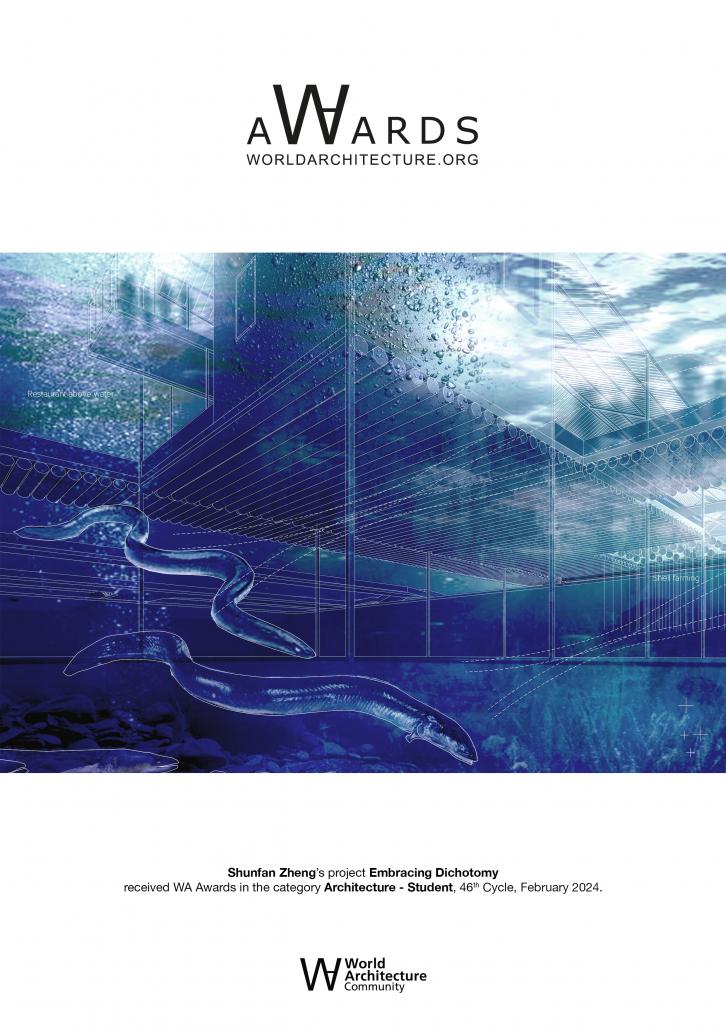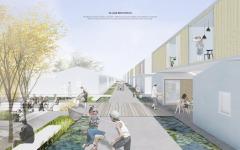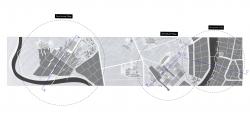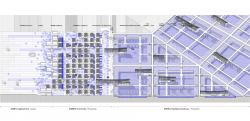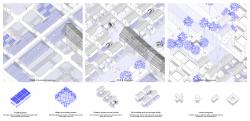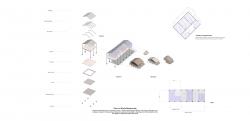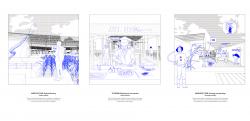In China’s countryside, agricultural production is a critical part of a villager’s cultural identity, defining the activities of everyday life. However, this custom is often ignored in the redevelopment of the countryside, and even sometimes transformed to increase productivity. Rather than taking this totalitarian stance, we propose a framework that practices everyday life as a catalyst to revitalize the rural society.
Taishan’s cultural identity could be understood by two dominants, yet very different, agricultural landscapes (traditional rice farming and eel farms). By utilizing these two landscapes as main drivers, the project seeks to calibrate the primary agricultural industries and redistribute its growth towards secondary industries and tertiary tourism within the next 20 years.
In the first phase, the framework suggests a hybridized landscape which is a combination of rice paddies and fish farms. According to the approximation of water resources in different sites, the new hybridized landscape will be different per site by its ratio of water and farmland. This new form of agriculture will operate as an economic driver that provides jobs to villagers and facilitates the village to attract new inhabitants. In the next phase, due to this initial economic growth, the villages would transform to meet the needs for expansion. Some villages would create more housing, while others would need to construct factories that transform agricultural production into commercial products. The project suggests two architectural interventions, both reinterpreted from traditional courtyard houses, to accommodate change and preserve traditional buildings.
In sum, “Embracing Dichotomy“ does not promote temporary development. Instead, by understanding and appreciating everyday life, it suggests a sustainable vision for the countryside that extends into both the past and future
2023
Location: Taishan, Guangdong Province, China
Site Area: 2.5 Acres
Height: 28 Feet
Unit Types: Type 1 - Rice Milling and processing, Type 2 - Gathering and agritainment, Type 3 - Water purification and observing, Type 4 - Shipping and storing facility.
Structure: Timber Framing
Design Interventions: We introduce Rice-aquaculture farming into our project. Such hybrids produce crops (carbohydrates) and animal protein without affecting the quality of rice yield and render additional financial revenue besides main crops like conventional monoculture. The hybridization farming practice will bring about significant changes to the existing building footprint. Such as the manufacturing and storage space associated with aquaculture production. More public space and shared amenities would also be needed when tourists are coming. Hybridization also inspires our architectural intervention, which reuses distinctive traditional buildings to provide adaptive typologies for different phases.
Design Team: Shunfan Zheng, Sungchan Kim, Xijia Zhang
Instructors: Elaine Kwong, Kathryn Firth; David Rubin
Embracing Dichotomy by Shunfan Zheng in China won the WA Award Cycle 46. Please find below the WA Award poster for this project.
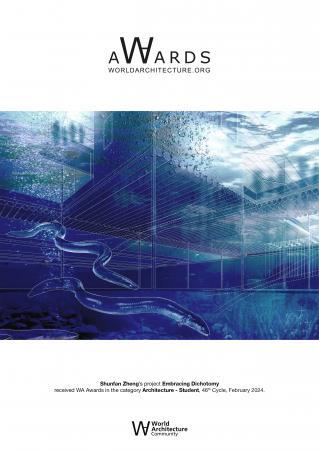
Downloaded 0 times.
